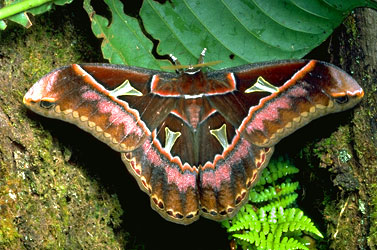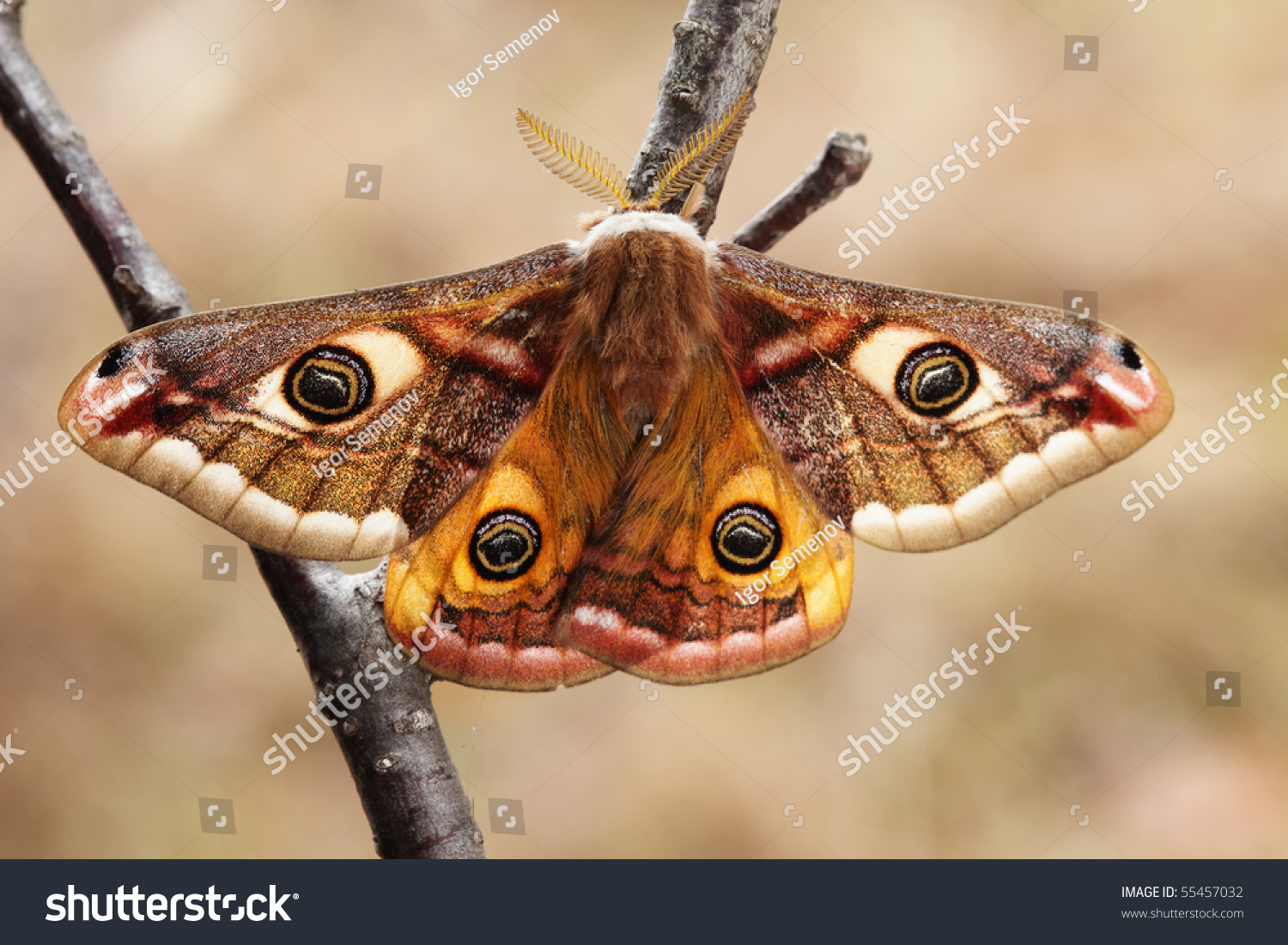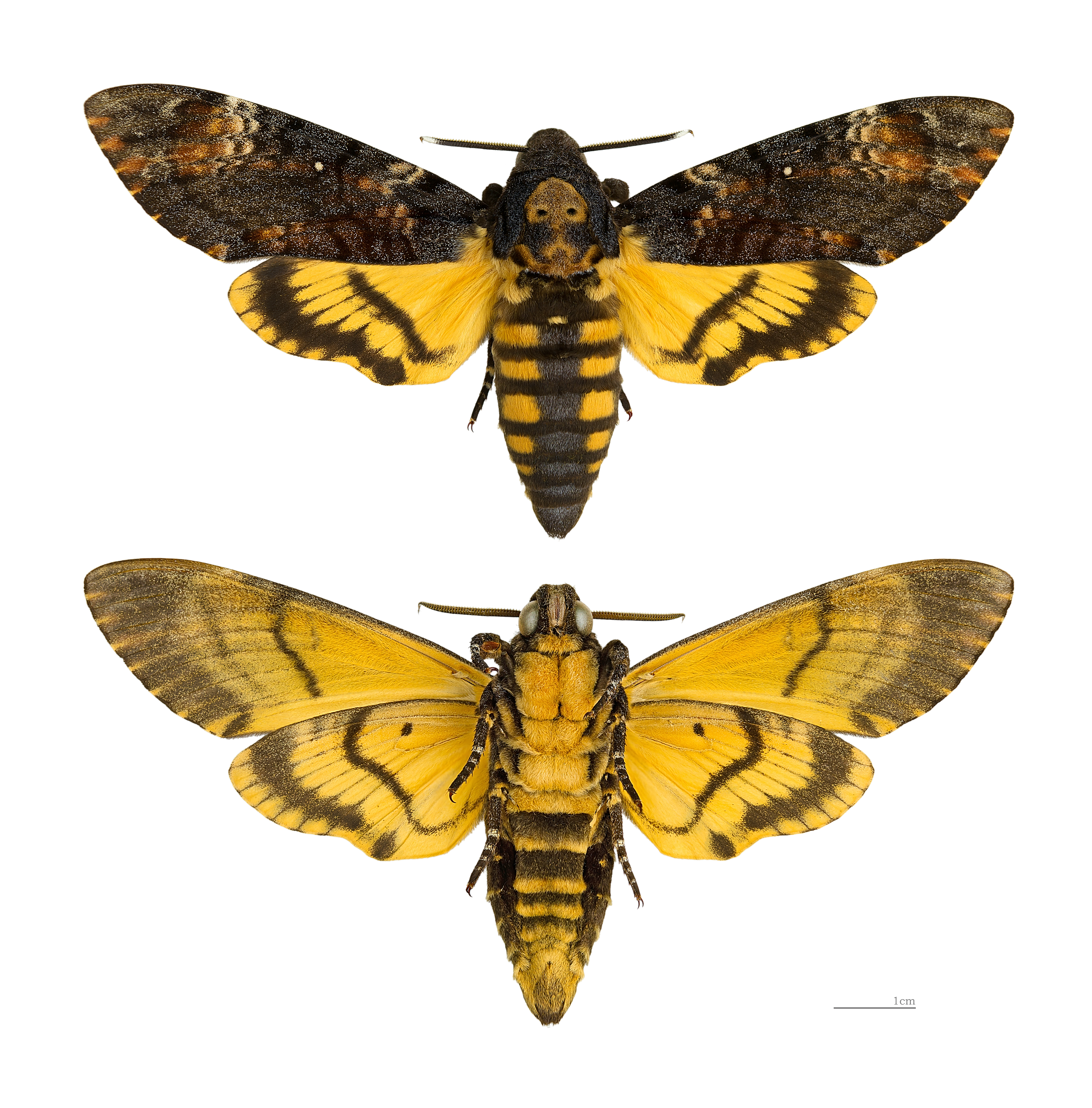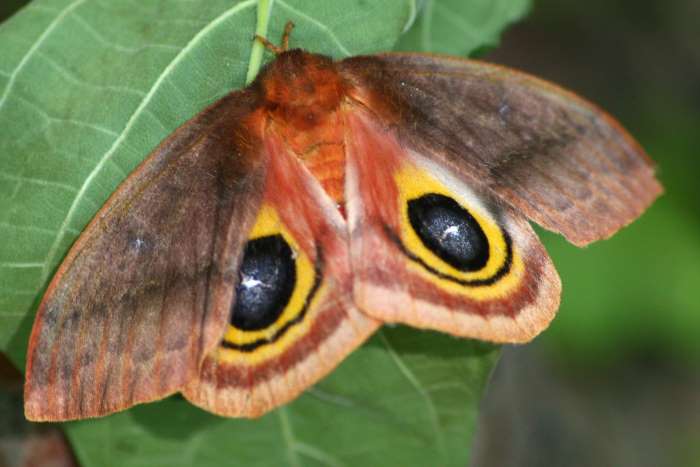Bombycoidea
Emperor Moth ( Saturnia pavonia ) from the family of peacocks Spinner
The Bombycoidea are a superfamily of butterflies (Lepidoptera ). Worldwide there are about 3350 known species. In Europe, 79 species and sub- species have been recorded.
Features
The monophyly of the superfamily is justified by the following Autapomorphieen: the hips ( coxae ) of the front legs have grown in the last caterpillar stage front, the eighth abdominal segment of the caterpillar usually wears D1 bristles on the back spring in the middle of a bump on the front wings extend the wing veins Rs1 Rs2 even grown in parallel near the base of Rs3 Rs4 or with this and the " 4 Muscles " in the male genitals are arranged differently than usual. The fact that the hips of the caterpillars are not fused at the Apatelodinae and some Eupterotidae and the bristles are not on the eighth abdominal segment at the Eupterotidae and some other sub-groups is probably due to the fact that these features have disappeared with the development of these taxa again.
The Bombycoidea has with the two other closely related superfamilies Mimallonoidea and Lasiocampoidea that the eggs are usually shared flat type, with a rather smooth chorion, which in some Mimallonoidea the chorion is sculptured. However, some groups of Bombycoidea, such as the Eupterotidae, Lemoniidae and Brahmaeidae also have eggs upright type. The short to long secondary bristles of the caterpillars are plentiful generally in the form, as is the case with the Lasiocampoidea. The dolls have a stocky build and not seldom have short antennae. The fifth and sixth abdominal segment is mobile and contributes in some species at the back fine denticles. Pupation takes place in many species held in a woven cocoon, which is used for example in the silkworms for commercial silk production.
The strongly-built in most species, strong and broad scaly winged imagos have no functional point eyes ( ocelli ). Their antennae are feathery double, triple or quadruple in the males. This, however, with the exception of the moth ( Sphingidae ), whose sensors have lost those characteristics by developing again. The veins Rs1 and Rs2 forewings are either stalked or completely overgrown. Both the thorax and the abdomen not Tympanalorgane are formed. The mouthparts, the frenulum and retinaculum are reduced in many species or missing entirely.
System
The Bombycoidea are very close to the Mimallinidae, which are the only family of Mimallonoidea, and related the Lasiocampoidea. These three superfamilies are probably a monophyletic group and are summarized by many authors in a common superfamily Bombycoidea. Such, however, is justified only by a few autapomorphies. In addition, the moth ( Sphingidae ) are assigned as a separate superfamily Sphingoidea by some authors. However, this must be regarded as incorrect because the fanatics can be well provided to the group of Bombycoidea both in the features of the moths and the caterpillars. The Bombycoidea in this sense comprise about 3350 species. The following families are assigned to the superfamily thus:
- Eupterotidae
- True Spinner ( Bombycidae )
- Birch Spinner ( Endromidae )
- Mirinidae
- Peacock moth ( Saturniidae )
- Carthaeidae
- Meadow moth ( Lemoniidae )
- Brahma Spinner ( Brahmaeidae )
- Moth ( Sphingidae )










